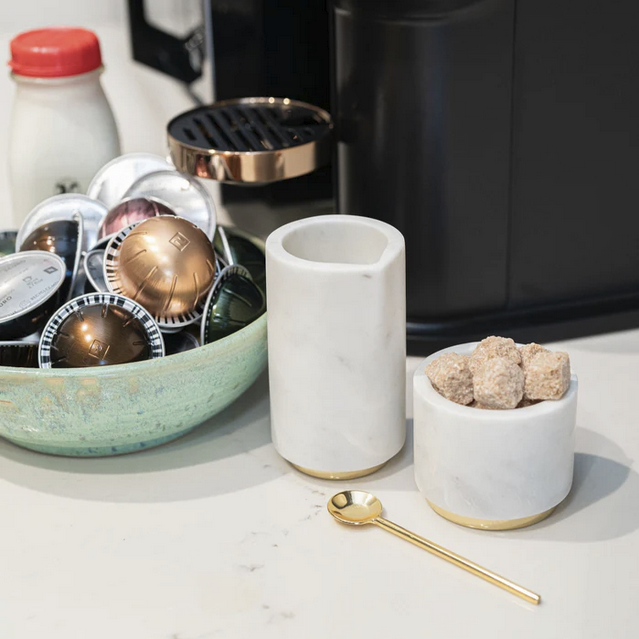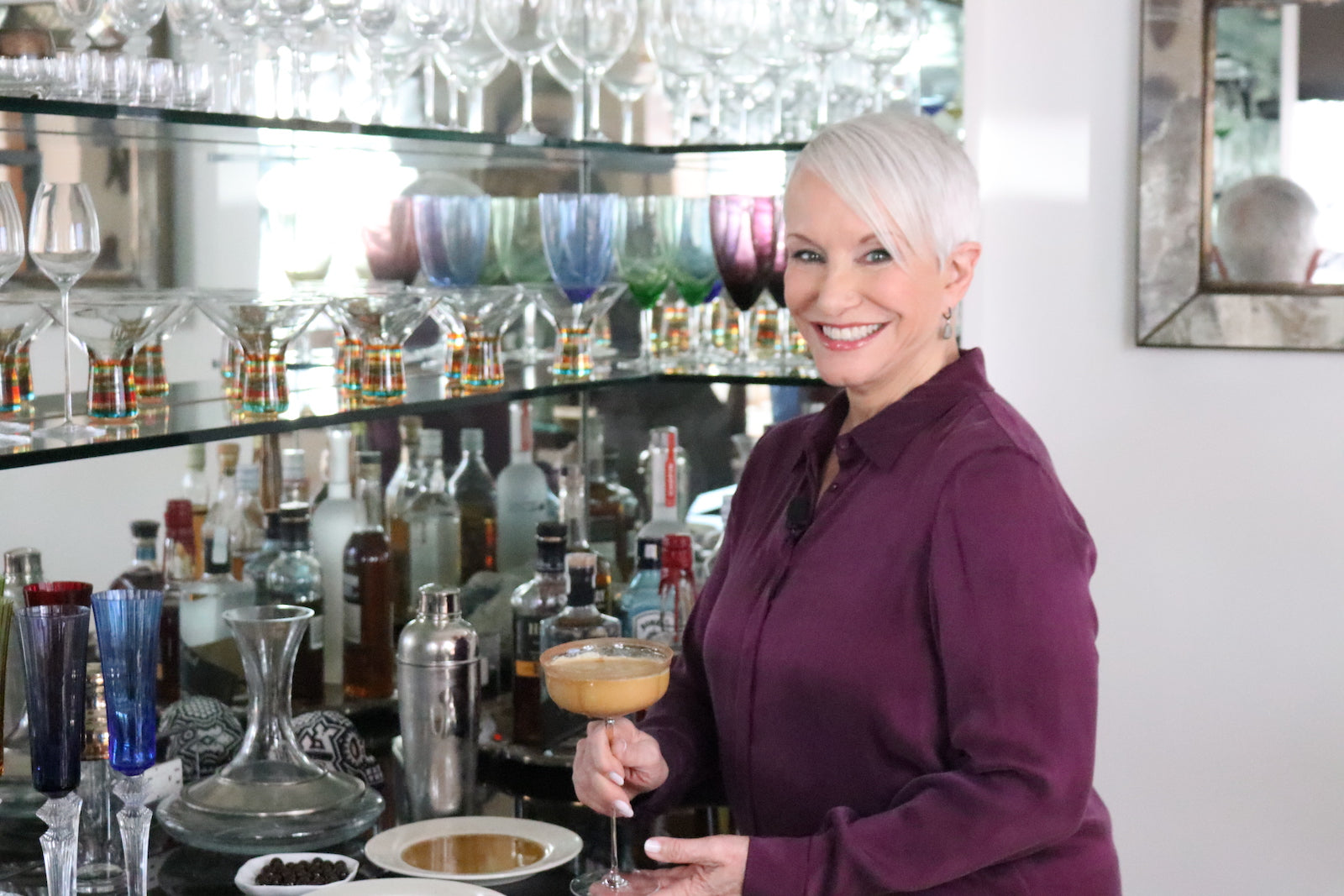Kitchen Hacks, Red Wine, Tabletop, White Wine
Wine and Dine: Elevate Your Meals with These Simple Wine Pairing Tips

A glass of wine has the potential to heighten flavors, textures and qualities in the foods that you prepare. With so many different wines to choose from, you might be wondering what makes the best match for your dish.
Fran Berger, home entertaining expert and lifestyle designer, shares an authentic desire to bring experiences to the home that artfully elevate everyday living. She has honed her craft for over 20 years to help you curate memories that last a lifetime. To simplify the basics of wine pairings within this guide, each wine is categorized based on taste profiles and characteristics that are highlighted when paired with certain flavors. This can help you to better identify the foods and wine that pair well together.
Whether you are a wine pairing novice or an advanced sommelier, this full guide to simple wine pairings can encourage you to expand your senses and create new, unique tasting experiences.
Understanding the Basics of Wine Pairing
Overview of the Different Types of Wine
Wines contain a variety of different flavors, colors, tastes and scents. Knowing the characteristics of each type of wine can help you determine which to pair with your next delicious meal.
Red Wine
Red wine flavors might include some fruits (from tart cranberries to jammy cherries) but may also include herbs, earthy, tobacco and even leather notes. Some varietals can also have notes of spice and cocoa. Red wine can have a smooth and creamy mouthfeel, making it easy to drink with many different types of food. Some of the most popular red wines include:
- Cabernet Sauvignon
- Merlot
- Cabernet Franc
- Petit Verdot
- Malbec
White Wine
White wines may taste of citrus or tropical fruit with aromatic floral tones or even include mineral qualities. Though not all white wines are sweet, white wine is higher in sugar content by almost 64% than most red wines. If you prefer a sweeter sip, white wine might be the best choice. The most popular white wines include:
- Chardonnay
- Sauvignon Blanc
- Pinot Gris
- Riesling
- Pinot Noir Blanc
Rosé
Rosé is a type of wine made from red skinned wine grapes where the winemaker leaves the white juice in contact with the red skins. It displays a pink hue and is lighter in flavor than red wine. Rosé has flavors of red berries, like strawberry, raspberry, and cherry, blended with florals. There are many different varieties of Rosé wines, from a bright Grenache Rosé to a crisp and dry Provence Rosé.
Dessert
Dessert wines have claimed this unique category due to the fact that they are much sweeter than the average red or white. For a sweet dessert wine, the winemaker ensures that there is sugar remaining in the wine after fermentation. This can be accomplished in several ways from adding sweetness at the beginning of the winemaking process so that some of the grape sugar survives fermentation to interrupting the fermentation process for the sugars to survive. These delicate wines are best enjoyed in small glasses and sipped slowly, as they are richly sweet in taste. The types of dessert wines are:
- Sparkling Dessert Wine
- Lightly Sweet Dessert Wine
- Richly Sweet Dessert Wine
- Sweet Red Wine
- Fortified Wine
Sparkling Wines
Sparkling wine is made from different kinds of white and red grapes. The bubbles are created from carbon dioxide (CO2) which is typically absorbed back into the wine during fermentation – this will produce ‘still’ wine. But most sparkling wines go through a second fermentation where sugar and yeast are added back into the still wine for the second fermentation and creation of CO2 bubbles. This traditional method is called méthode Champenoise and most quality producers use this method. Other methods include adding CO2 back into the still wine before bottling (typically found in lesser quality sparkling wines). Sparkling wine will range in color from white to a soft straw color to pink to light red. Most sparkling wines are light and fruity, with flavors of citrus, vanilla, and toast.
Not all sparkling wines are Champagne - Champagne refers to wine that is specifically produced in the province of Champagne, France. Other types of sparkling wine include:
- Cava
- Prosecco
- Sekt
- Crémant
- Sparkling Rosé
Taste Profiles and How They Interact With Wine
Taste profiles are common flavors that are directly detected by the tongue. When done right, different combinations of these profiles and wine - salty, sweet, sour, bitter, spicy- can bring you a new, unique tasting experience every time.
Salty
Salty foods pair well with many different types of wine. Salinity in foods influences the acidity in your wine, making it taste more astringent and less sweet, which helps to highlight the flavors and aromas of the fruit. Choose an off-dry or sweet and fruity wine to pair with a saltier dish or appetizer.
Sweet
Wine and desserts make an excellent combination when paired correctly. This might seem like it would be cause for a sweet tooth, the sugar in food naturally lessens the taste of sugar in the wine, so a dry wine may be too bitter or acidic with these dishes.
White wines typically pair well with soft cheeses and desserts with honey, butterscotch, vanilla and floral accents. Red wine is best when matched with chocolates, dark berries, and puddings. Start with a dessert wine to enjoy beside a sweeter dish of choice or one that is of higher acidity.
Sour
Acidity in foods pairs well with a variety of other taste profiles - sweet, sour and even bitter wines provide balance to the brightness of tart and sour dishes, such as a salad with a light citrus dressing, or an acidic tomato sauce. Acidic wines pair well with lighter-bodied, higher-acid wines, such as Pinot Noir and Grenache.
Bitter
Acidity and sugar in wines will help subdue the bitterness in your dish. It is best to pair bitter food with red wines that are lower in tannins, such as Pinot Noir with dark chocolate. You may also consider white or Rosé wines that are sweeter in taste to balance the flavors.
Spicy
The residual sugar in off-dry wines offers a contrast of spicy flavors in dishes and helps to balance the heat. A sweeter wine can also highlight and bring forth some of the spice used to create the dish. Consider an off-dry Riesling or Rosé to pair with richly spiced meats, like curry or cumin.
Pairing Wine with Different Food Groups
Appetizers and Light Meals
Pairing Wine with Cheese
Studies have proven that cheese and wine both complement and contrast one another, enhancing the characteristics of each. The texture and tannins in a glass of white wine cut through the creaminess of soft cheese, for a silky mouthfeel. The salt in cheese influences the acidity in your wine, making it taste more astringent and less sweet, which helps to highlight the flavors and aromas of the fruit.
Buttery, sweet, and rich in flavor, semi-hard cheeses balance well with a dry wine, especially with Haber Family Vineyards Chardonnay. Semi-soft cheeses are more complex in flavor and tend to pair well with a fruitier wine. Many soft cheeses are unripened, giving them an ultra-creamy texture with salty and earthy flavors. Contrast these flavors with a sharp, sparkling wine like a vintage Dom Pérignon.
Pairing Wine with Charcuterie
Charcuteries are a delicious food pairing trend - meats, cheeses, fruits and more are used to create a spread full of flavor, texture and color. When paired with wine, the contents of the charcuterie can be heightened, giving you a sensational bite.
When looking for the perfect marriage of charcuterie, choose a wine that matches the meats. Prosciutto, salami, and soppressata are mild, salty meats that work well for a charcuterie platter.
Lighter-bodied white and red wines, such as Sauvignon Blanc or Pinot Noir, cut through the savory flavors of these meats, as they are bright in acidity. The fruity flavors of these wines also bring out the textures of soft and semi-soft cheeses, like mozzarella, gorgonzola, brie, and goat cheese.
If you’re feeling bold, try pairing your charcuterie spread with a sparkling Prosecco or Rosé. The bubbles bring a lively contrast to the oils and fat in the meat.
Pairing Wine with Seafood
Texture and flavors are essential considerations to keep in mind when choosing a wine for your seafood dish. Many white wines, specifically those that are drier and higher in acidity, pair well with seafood dishes as they can even out the salinity of the fish. A bubbly, dry Champagne, like Dom Pérignon, beautifully enhances the saltiness of delicate caviar.
Main Courses
Pairing Wine with Red Meat
The copious levels of tannins in red wine are reactive to proteins, which soften the rich fats within red meats. In turn, the fats from the meat mellow the astringency in red wines, creating a delectable mouthfeel for both the dish and the glass.
Steak and Cabernet are a match made in heaven, especially when paired with a Revana Estate Cabernet Sauvignon. This exclusively produced red wine is a graceful mix of baking spices and dark berry flavors, perfect for creating a dramatically delicious pair for your meat.
Pairing Wine with Poultry
A rule of thumb for pairing wine with poultry is that light meat, like chicken and turkey, match well with white wine, while darker meats from duck and quail make a great duo for red wine. Pour a glass of Davis Estates Pinot Noir with your next dark meat poultry dish. This classic Pinot Noir carries traces of dark cacao, rhubarb, and rich cherry. The lively tannins of this red wine dance well with earthy spices and mushroom-based sauces.
Pairing Wine with Vegetarian Dishes
Vegetable dishes go well with dry Rosé wine, like Pinot Noir or Syrah, as they do not overpower the spices and flavors of your dish. Darker vegetables such as eggplant and artichoke are brought to life with a glass of red wine or Rosé. If your meal has a sauce, pair the wine with the flavors used in your sauce.
Desserts
Pairing Wine with Chocolate
When pairing wine with chocolate, finding that “sweet” spot can make all the difference. Avoid pairing dry wine with dry chocolate. It’s best to choose a wine that is softer and silkier than the chocolate of choice. The light and fruity flavors in Pinot Noir and Moscato pair lovingly with milk chocolates and delicate desserts. Rosé or Chardonnay do wonders with white chocolate, vanilla and other nutty flavors.
Pairing Wine with Fruit-based Desserts
The effervesce of sparkling wine will complement the natural tartness of fruit, delighting your tastebuds. Any fruit or dessert with jams and jellies will pair beautifully with the strong fruit flavors of well-made muscatel or Sherry. Pair a fruit pie, such as cherry, with a glass of Late Harvest Riesling of choice.
Pairing Wine with Creamy Desserts
A sweet, buttery white wine can complement creamy dessert textures. Custard-based desserts go especially well with highly-acidic wines because they offset the density of the custard. Consider matching tones of citrus flavors of your wine with complementary fruit flavors of your dessert. The hints of citrus within a Vie de Romans Pinot Grigio paired with a creamier dessert like crème brulée or mascarpone over berries make for a mouthwatering experience.
Advanced Wine Pairing Techniques
- Exploring regional pairing traditions - Wine and food that are produced and prepared in the same regions are usually a well-paired duo. This is because they are harmoniously grown in the same environments and soils.
- Pairing wine with spicy dishes - Acidity in food and acidity in wine blends well with one another. Find a tart red wine to pair with dishes that are zesty or spicy.
- Pairing wine with complex flavor profiles - When your dish is full of many different flavors, consider a wine that will complement or smooth out these profiles so that your taste buds aren’t overpowered.
Serving Wine: Temperature and Glassware
The Importance of Serving Wine at the Right Temperature
The temperature of your wine can intensify or dilute the characteristics of your wine, making it an important component of the dining process. When served at the right temperature, a glass of wine brings a meal full circle in terms of taste and flavor.
Red wine can be served between 55° F and 65° F, slightly warmer than white wines, which is why it is perfectly acceptable to use a stemless glass for red wine. White wine is best served cooler than room temperature - between 45-50° degrees Fahrenheit. Champagne or other sparkling wines are best served chilled, ideally between 46-50 degrees Fahrenheit.
Selecting the Right Glassware for Different Types of Wine
Choosing a stemware for your drink of choice will assist in highlighting the best characteristics, flavors and aromas. Learn more about the different types of glassware and what they are used for:
Red Wine Glasses
Red wine glasses typically feature a larger bowl, designed to mellow the astringency and allow the aromas and flavors of the wine to fully release. Red wine glasses have various stem lengths, including stemless, because they can be served warmer than white wines.
White Wine Glasses
White wine glasses are intentionally designed to preserve delicate floral aromas and crisp, cool temperatures. Unlike red wine, white wines do not need a lot of space to breathe. Instead, white wine glasses usually have a smaller bowl and opening at the rim of the glass to maintain cool temperatures and preserve the citrus aromas.
Stem length is also an important factor for white wine because a longer stem helps to prevent hands from warming the contents within the glass. Fran Berger’s Signature White Wine Glass rests effortlessly in the hand, presenting a long and delicate stem made from 100% lead-free crystal.
Champagne Glasses
Champagne glasses come in four distinct shapes: flute, tulip, wide tulip, and coupe. The shape and size of your Champagne glass can be an important factor in your tasting experience. A slimmer body, much like the one Fran Berger’s Signature Champagne Flutes display, makes for a bubbly mouthfeel, whereas a larger opening, such as the coupe, can encourage the bubbles to disperse more rapidly.
Stem length is also an important factor for sparkling wines because a longer stem helps to prevent hands from warming the contents within the glass.
Common Wine Pairing Myths
Myth: Red wine should always be paired with red meat
While red wine is most commonly paired with red meat dishes, there are white wines that would liven up these hearty meats. For example, the herbaceous notes of green bell pepper from a sauvignon blanc blend well with coriander and fennel that might be used in a braised lamb shank. The acidity and structure in a Riesling can cut through fatty, dry-aged meats, standing up to those powerful, buttery flavors.
Myth: White wine should only be served with seafood and poultry
It is widely suggested to drink white wine with seafood, but some red wines can make an ideal pairing. Oils from fish blend well with the tannins in red wine, much like other fatty foods. Meatier fish - such as salmon, sardines, and tuna - can stand up to the more robust flavors of a red wine. Try balancing with a medium-bodied Pinot Noir or deep Merlot.
Myth: Dessert wines can only be paired with desserts
A bottle of sweet wine can elevate a main course with bright acidity. Like other sweet wines, dessert wines can also elevate the flavors of creamy, rich flavors and fatty foods, such as soft cheeses, sweeter meats (ham, bacon), honey and caramelized onions.
Find Your Perfect Pairing
Experience the foundations of fine dining when you find the perfect wine pairing. With so many different types of wines to choose from, red, white, sparkling, and dessert, to name a few, each has the ability to transform your next meal into a luxurious moment. From understanding the different taste profiles to breaking common wine pairing myths, this full guide encourages you to experiment with wine pairings and develop your own personal favorites. Hone the artful skill of elevated living in your own home through more expert advice and insights from lifestyle designer, Fran Berger, by visiting her website today.
























